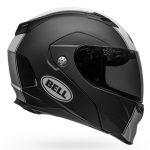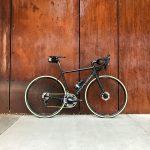Mountain Bike Size Chart – the Complete Guide
A mountain bike size chart is the best place to start when choosing the perfect size bike. The size chart serves as an excellent starting point for determining the perfect bike for your height.
Before you buy a new mountain bike, the most vital factor to consider is whether the new bike will fit you well. Do you know how to choose the correct mountain bike size? It’s worth noting, though, that mountain bike size differs significantly from that of city bikes and other types of bicycles.
Sizing Guide
Choosing the right frame size is a matter of preference. It’s crucial to determine what type of bike you want to buy since different bikes cater to different riding styles. Luckily there are several techniques to estimate bike size without having to go into a store, whether you’re buying adult bikes or a balance bike for your child.
Remember that using a mountain bike size chart is essential because getting a wrong-sized bike will result in problems such as back pains, knee pains, and riding discomfort.
How are mountain bikes sized?
The most common mountain bike sizes are small, medium, and large. The only thing that changes when going between sizes is the bike frame size. Otherwise, everything else, such as wheel size and suspension, stays the same. On the other hand, some bike manufacturers will modify factors like wheel size and suspension travel over a model’s size range. The traditional technique of bike sizing is seat tube length, but with all the unique designs that mountain bikes now come in, it’s become less helpful in determining what size mountain bike you should acquire.
Mountain Bike Size Chart
We always advise shoppers to look at a manufacturer’s mountain bike size chart for a more precise size guide. But here is a general mountain bike size guide to help you get the idea behind sizing. It is also possible to use a size calculator.
Looking for kids’ bike sizes? check the full post here
| Size | Rider Height | Frame Size | Inseam | |||
| INCHES | CM | INCHES | CM | INCHES | CM | |
| XS | 61-64 | 152 – 162 | 12-14 | 31-36 | 29 | 74 |
| S | 64-67 | 162 – 170 | 14-16 | 36-41 | 30 | 77 |
| M | 67-70 | 170 – 178 | 16-18 | 41-46 | 31 | 80 |
| L | 70-73 | 178 – 185 | 18-20 | 46-51 | 33 | 83 |
| XL | 73+ | 185+ | 20-22 | 51-56 | 34 | 87 |
Because most mountain bikes have a low standover height, the classic approach of standing flat-footed over the bike doesn’t work either. This is why mountain bike manufacturers employ small, medium, and large sizing systems and offer their size suggestions based on your height. However, many riders find themselves in the middle of a size range. Whether you should size up or down depends on your riding style and body dimensions.
Here are recommendations on how to scale up or down when you’re between sizes on your mountain bike.
What you get for choosing to go up a size
With mountain bike size, Reach is more likely to shift from Small to Large than Stack. Most mountain bikes strive to get as low as possible to provide the rider with much range of motion in the cockpit. Therefore, you’ll see many bikes with a higher reach. As the overall bike becomes a little longer, there’s also a tiny increase in wheelbase, so you get the benefits (and drawbacks) of a long mountain bike.
Also, if you have a proportionately longer torso, you’ll want to size larger to have a neutral fit, as Reach is the key factor that determines size. Hip flexibility and range of motion are other vital factors to consider. If leaning over and reaching your toes seems complicated, a longer bike will make maintaining a low and aggressive riding position more difficult.
So, size up your mountain bike if you’re flexible, have a longer torso, and monster-truck over your terrain rather than flip your way around it.
What you get for choosing to go down a Mountain bike size
A smaller mountain bike will have a shorter Reach and a somewhat shorter Wheelbase. When you’re in between sizes, your standover height will be a little slower, and you might have to lengthen your seat-post a little to get to your pedaling position, but it’s a slight problem.
A shorter wheelbase will also let you ride more nimbly. And while the longer cockpit allows for a more aggressive riding posture, low and aggressive riding positions are exhausting to be in. So keep your fitness, endurance, and ride duration in mind. Shorter bikes are more comfortable to ride for extended periods.
So, scale down your mountain bike if you want a more agile and whippy ride, have a shorter torso or prefer a more relaxed riding position.
Women’s and Men’s Mountain Bike Fitting
Women’s shoulders are often narrower than men’s, and many have longer legs than their bodies. Women’s bikes are intended to accommodate their relatively slimmer shoulders and long legs compared to their torsos than men’s bikes.
Women’s bikes often have narrower handlebars and smaller or more compact frame sizes for the perfect women riding experience. Women’s mountain bikes with narrow handlebars and compact/shorter frames are available. However, men’s bikes may fit well and be comfortable for some women, while women-specific bikes may give a more accurate fit for others.
What men should consider finding their correct size for a mountain bike
As a man, the question of what size bike to acquire will depend on several factors. You’ll want to think about these crucial factors to make sure you choose the right size of bike for your needs.
Height and Inseam
Your physical height and inseam length are important considerations when choosing a bike. Surprisingly, everyone has their physical type.
Frame for Mountain Bikes
If the bike’s frame size is incorrect, you may have difficulty pedaling and feel uncomfortable. Your legs and torso feel cramped when you ride a too tiny bike, and you can’t completely extend your leg to maximum riding force. However, if the frame is enormous, you won’t achieve the leg rotation needed to cycle at more incredible speeds.
The Seat Position
Every rider is unique. Many people like a somewhat forward-tilted seat, while others prefer a backward-tilted seat. The most popular, though, is still level. When assessing a bike’s fit, set the seat in your desired position so that your feet rest on the pedal and your legs almost touch when you stretch your legs.
The Position of the Handlebars
The handlebars of a bike that fits properly are in the proper position. The strain can cause back pain, wrist soreness, and shoulder discomfort if you’re not positioned appropriately. The handlebars on racing and touring bikes are usually the same width as your shoulders. The handlebars on road bikes are roughly an inch below the top of the saddle. The handlebars of a mountain bike are further lower to generate a higher center of gravity.
Measurements of Wheels
When the tire is installed, the wheel’s diameter is used to determine the wheel size. In most situations, the measure will be stated on the sidewall. The bike’s primary use determines the wheel size. l. Mountain bikes have wide tires.
Mountain Bike Size Chart Measurements: How to Measure a Bike Frame
Mountain bike geometry refers to the bike’s overall shape. Several crucial measures go into your mountain bike’s complete shape and geometry. When evaluating the feel, fit, and style of a mountain bike, these measures are critical, and they’re typically related to the style and terrain your bike was designed to handle.
When comparing bikes or dealing with a specific fit issue, having a basic grasp of bike geometry may benefit. The following are a few crucial indicators:
Effective top tube length
This is the horizontal distance between the head tube and the seat tube, regardless of whether the top tube is straight or sloped. The effective top tube length is a standard number to consider when sizing a bike. It’s a decent estimate of how long a bike will feel while you’re seated.
Seat tube length
It is the distance between the bottom bracket’s center and the top of the seat tube. This measurement dictates how high or low the bike’s saddle may be adjusted and how long or short a rider’s legs can be.
Down tube length
This is the measurement between the bottom of the head tube and the middle of the bottom bracket. Although down tube length isn’t usually listed on manufacturers’ sizing charts, it’s a simple measurement that a buyer may do at home when comparing bikes.
Stack height
The stack height is the vertical distance between the bottom bracket and the center of the head tube. It measures the relative handlebar height and the seated pedaling posture. It determines the minimum height of the handlebars in regards to the bottom bracket and is linked to the Reach of a bike.
Bottom bracket height
It is the distance between the ground and the middle of your mountain bike’s cranks. Bottom Bracket Drop is a term used by some bike manufacturers to describe the distance between the bottom bracket and the wheel axles vertically. They effectively measure the same characteristic of a mountain bike, namely the low center of mass.
Bikes with low bottom brackets corner like rails and seamlessly transition from one turn to the next. The downside is that the ground isn’t level, and trails aren’t always smooth; the lower your bottom bracket, the more likely you are to clip pebbles, roots, or logs you’re trying to avoid.
Bottom bracket drop
The bottom bracket drop indicates how much the bottom bracket’s center is above or below the horizontal line connecting the axles’ centers.
Front center
This is the horizontal distance between the bottom bracket’s center and the front axle’s center.
Wheelbase
The length of a mountain bike’s wheelbase is determined by several elements, including head angle, chainstay length, and reach. The total wheelbase is the result of combining all of these elements.
The basic idea behind wheelbase is that when you extend the distance between your front and back axles, it increases stability while decreasing it makes a bike more agile.
Reach
Reach is the horizontal distance between the bottom bracket and the center of the head tube. It is likely the most crucial metric for mountain bike fit since it determines how long your bike’s cockpit will be when you’re standing on the pedals. And also how much range of motion in your hips you’ll require to reach a solid, robust riding posture. If you have a long reach, you’ll be trapped bent over and stretched out; if you have a short cockpit, your weight bias will move too rapidly, leaving you in an unnaturally upright position.
Rear center/chainstay length
Each rider has their personal preference for chainstay length. The distance between the rider’s center of mass and the rear axle is essentially determined by this measurement. Short chainstays let the rider move their weight more freely. It makes manuals and wheelies simpler and gets the front tire off the ground in general.
It is at the price of the overall Wheelbase length, which is vital for stability at high speeds and over uneven terrain. Short chainstays are your friend if you want your bike to ride nimbly and enjoy wheelies and manuals. Choose a bike with longer chainstays if you wish for more stability.
Effective seat angle
When the seat post is at pedaling height, the effective seat angle is the angle formed by the line from the bottom bracket to the center of the top of the seat post. Manufacturers rarely provide the height at which the effective seat tube angle is measured.
Head angle
The angle formed between your mountain bike’s front fork and the ground is the head tube angle or head angle. Although other factors influence how the front wheel behaves (fork offset, trail), this is the industry’s primary criterion for determining front-wheel characteristics.
On uphill terrain, bikes with steep head angles seem like the front tire is grounded and steers nimbly, but they feel twitchy and unstable on rapid downhill terrain. If you like to ride uphill, choose a bike with a higher head angle, and vice versa if you want to go downhill.
Actual seat angle
The actual seat angle is the angle at which the bike’s seat post is measured with the horizontal.
Finding Your Measurements
The bike size you choose is determined by the type of bike, your height, riding style, and personal preference. A perfect size bike will be more comfortable, efficient, and enjoyable to ride. Here is a brief guide on how to go about determining your measurements.
Height
Stand against a wall and mark the wall with a pencil to level with the top of your head. Then, from the ground up, measure to the mark. Having someone to help might make this easier.
When your height is on the border of a size range, your Reach is sometimes the decisive factor in terms of which size to choose. You may determine if you have a short or long reach by measuring your ape index. This is the length of your arm minus your height. If your ape index is positive, opt for the larger size; if your ape index is negative, go for the smaller size.
Inside Leg Length
What is the length of the inseam? The inseam is just the measurement in centimeters from the floor to the highest possible crotch position.
In principle, your standover height is 2cm less than your leg length. It’s a good idea to measure your inside leg with your shoes on to determine your standover height. If you need to get out of the saddle fast, the space between you and the frame will keep you safe.
Though it isn’t as widespread as it previously was, for sizing bikes, standover height can still be utilized to determine whether or not a bike is right for you.
First, ensure that you can straddle your bike with your feet flat on the ground. When lifting a mountain bike, the tires should have at least 2 inches of clearance from the ground. It makes it easier to get out of the saddle and dismount quickly on the route. It’s pretty uncommon for aggressive riders to look for 3 inches to 5 inches of ground clearance. When measuring standover height, make careful to wear your bicycle shoes because they may alter your overall leg length.
Inseam
First, consider having the following: A large hardback book or notepad, a tape measure, and a pencil are all needed. Then:
- Place yourself against a wall with your bike shoes on and your feet 6-8 inches apart.
- Place a spine-up book between your legs and lift it till it resembles a bike seat positioned between your legs.
- Draw a line on the wall where the book’s spine touches the wall with the pencil.
- From the mark to the floor, take a measurement. It is the length of your inseam.
- Make sure the measurement is precise by repeating it a couple more times.
Please note that if you go to a store where they have a professional bike fit service, all these measurements will be taken care of by the store and you really need not bother taking the measurements. But it’s still a good idea to familiarize yourself with what it takes to arrive at such critical measurements.
Conclusion on mountain bike size chart
Mountain bikes are extremely popular and there is always a lot that we can talk about. We hope this guide gives you a good start and that you will finally be able to buy the correct size according to accurate measurements and not forget personal preferences.
Just remember that it is often the fine details that make the difference. For example, when shopping online, look for indicated standover heights, and compare that figure to your inseam. For instance, if your inseam is 30 inches, you’ll want a mountain bike with a standover height of roughly 28 inches.
Please ask any questions you might have and it would be so nice of you to share this resource with friends.
Picture in this post by Nathanaël Desmeules on Unsplash
Other related bike size charts
- Cycling gloves size charts
- KTM Bike Sizes
- Women’s Road Bike Size Chart – All Dimensions and Tips for the Perfect Ride
- Women’s Mountain Bike Size Chart – A Complete Guide
- Cateye Tire Size Chart: Measurements
- Bell helmet sizing chart – Helmet sizes for youth, women and men
- Peloton Bike Size and Dimensions guide
- Hybrid And Fitness Bike Size Chart
- Road Bike Size Chart – A Complete Guide
- Mountain Bike Size Chart – the Complete Guide
- Children’s Bike Size Chart – Fit by your kid’s Age and Height












